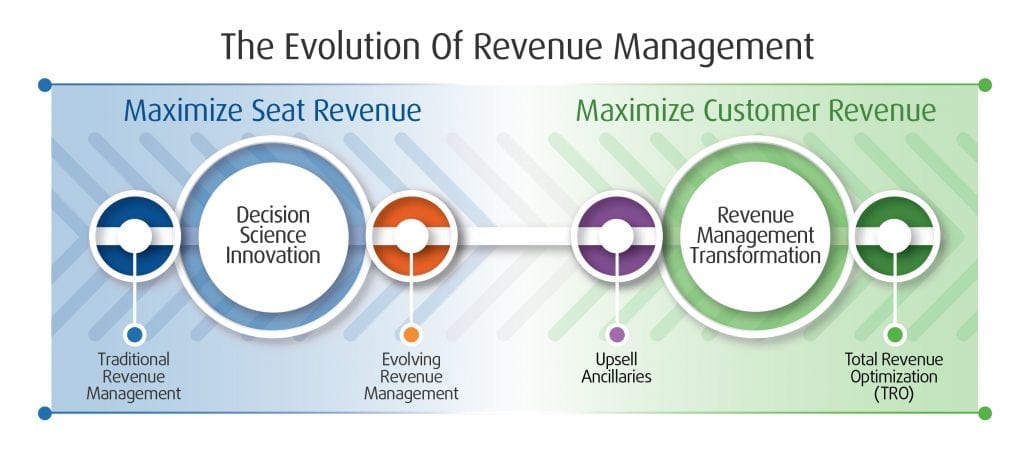Skift Take
In the ever-changing realm of revenue management, focusing on revenue per customer vs. revenue per seat is the way of the future for the airline industry.
This sponsored content was created in collaboration with a Skift partner.
Business challenges for airlines are evolving, yet they still continue to center around a key set of core requirements. Airlines need to increase company profits in a progressively competitive and marginally-challenged market. They must identify a means to present real-time data in a consumer grade manner that will improve their analyst’s productivity and accelerate responsiveness to changes in the marketplace. And foremost, all of their actions need to support the enhancement of the customer experience.
How can airlines overcome these challenges? By implementing a next generation revenue management solution empowered by innovative technology that not only delivers on these requirements, but also supports airlines’ path toward realizing total revenue optimization.
Pricing and Revenue-Management Shift
Regardless of geography, business model or size, carriers are faced with an ever-increasing number of obstacles they must overcome to achieve success in today’s highly competitive environment. These obstacles encompass the familiar areas of increasing profits, evolving distribution models, interpreting volumes of unstructured data and the need to offer a more personalized customer experience. New distribution points have generated large volumes of data that hold valuable insights about airlines’ customers. Airlines are now tasked with efficiently collecting, processing and analyzing this data and subsequently using it to sense and respond to shifting market dynamics. And customer demand for a seamless personalized travel experience continues to increase while airlines attempt to implement an integrated customer-centric business strategy that is aligned with revenue objectives.
To ensure future success, airlines need a next generation revenue management solution that supports a fresh approach focused on revenue per customer rather than revenue per seat and provides the means to incorporate operational efficiencies into their business processes. In addition, it should encompass readily-accessible, up-to-date, real-time information that will improve retailing and customer-centricity strategies while overcoming competitive influences in the market place.
Next-Generation Revenue Management
Today’s airline industry is in the midst of an evolution and revenue management systems must evolve as well. Utilizing revenue management to manage seat inventory and marketing promotions is no longer considered a strategy for long-term profitability.
Airlines require a revenue management solution that is robust and provides airlines with more accurate, real-time information in an easy-to-consume and interpret format. It should provide performance enhancements for an airline and productivity improvements for its employees. Additionally, it must support airline’s path to realizing total revenue optimization. And, most importantly, it should lead to increased customer satisfaction by promoting a seamless passenger journey.
To learn more about what a next generation revenue management solution should entail, please download the full Sabre article The Evolution Of Revenue Management.
This post is brought to you in sponsorship with our partner, Sabre.
Have a confidential tip for Skift? Get in touch
Tags: airlines, revenue management


